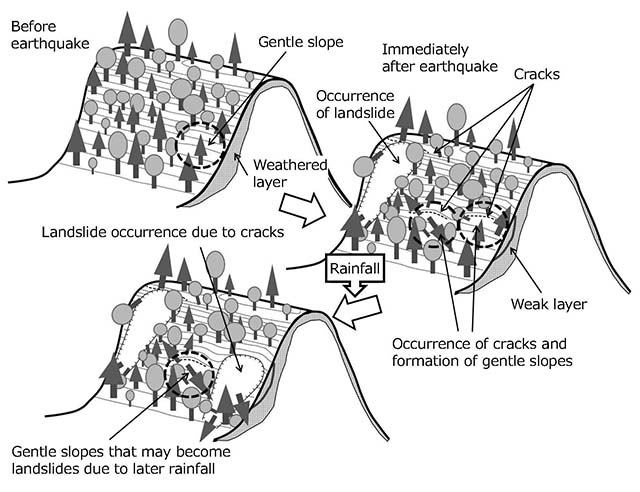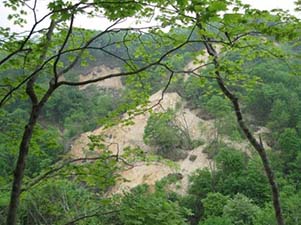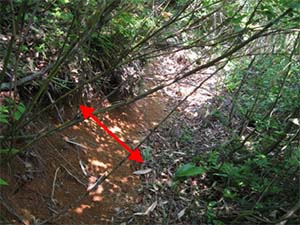Home > Research > Research Results > Research Results 2017 > Why are landslides caused by rain prone to occur after earthquakes?
Update:August 1, 2017
Main content starts here.
Why are landslides caused by rain prone to occur after earthquakes?
| Article title |
Geomorphological characteristics of mountain slopes with landslides induced by rainfalls after the Iwate-Miyagi nairiku earthquake in 2008 |
||||
|---|---|---|---|---|---|
| Author (affiliation) |
Wataru Murakami(a), Hiromu Daimaru(a), Morio Kaneko(b) (a) Department of Disaster Prevention, Meteorology and Hydrology, FFPRI, Tsukuba, Ibaraki, Japan. (b) Tohoku Regional Forest Office, Forestry Agency, Akita, Japan. |
||||
| Publication Journal |
Journal of the Japan Landslide Society, 54(1): 3-12, January 2017, DOI: 10.3313/jls.54.3( External link ) |
||||
| Content introduction |
A certain phenomenon causes landslides due to rainfall after major earthquakes, as has been often reported in cases such as the Great Kanto Earthquake in 1923 and the Great Hanshin–Awaji Earthquake in 1995. However, many unknown factors governing the underlying mechanism of landslides are unknown. We conducted a time series analysis and a field survey on the detailed topographical data of the mountainous district of Iwate Prefecture, wherein landslides due to rainfall occurred after the Iwate–Miyagi inland Earthquake in 2008. Furthermore, we closely investigated the influence of earthquakes on sloped areas. From the results of the survey, we learned that most of the landslides due to rainfall after an earthquake occurred on slopes wherein some deformation was seen, for example, formation of new cracks due to seismic movement. We conducted simple penetration tests and excavation cross-section observations to survey the hardness of the foundation, and the results show that the foundation comprised a weak weathered layer near the ground surface that could be dented by merely sticking a finger in it. These types of cracks and weak layers are formed by slippage of a part of the slope as a result of a seismic movement. In this study, we observed, in concrete terms, the influence of seismic movement on the weathered layer of slope surfaces considering that the formation of this type of weak layer may have been caused by the occurrence of other earthquakes. After the Kumamoto Earthquake, which occurred in 2016, there was a fear of landslide due to rainfall, and based on the detailed topographical data obtained using airborne LiDAR by the Ministry of Agriculture, Forestry, and Fisheries, efforts are being made toward early detection of secondary landslide risk areas near earthquake disaster sites. We plan to use the results of the present study to develop disaster prevention measures for areas that are at a risk of landslide after an earthquake such as the Aso area.
|
||||
Copyright © Forest Research and Management Organization. All rights reserved.



